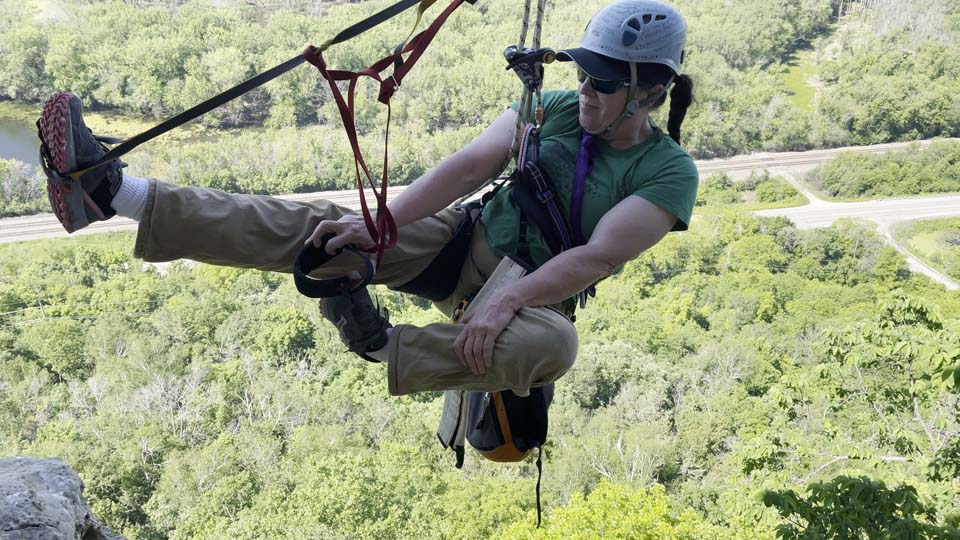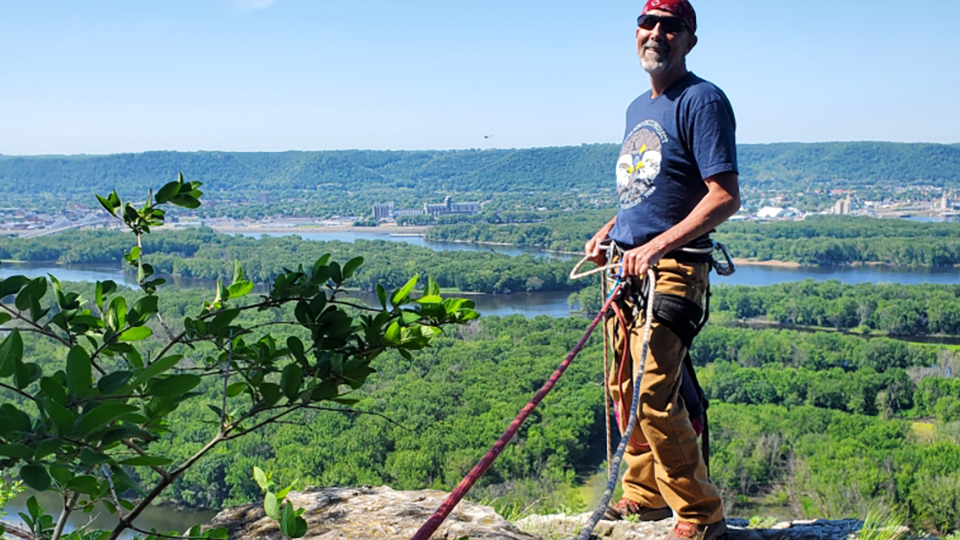After 2020’s masks, gloves, and site limitations, it felt good to get out in the field, band falcons, and see old friends again. We banded 80 falcons at 29 sites in four states this year: a record for us! 11 sites were on cliffs, 9 were at power plants, 4 were at grain mills, 4 were on buildings, and one was on a water tower at 3M. We couldn’t band at two sites because the falcons were too old, which means the start date for our season will likely be pushed even earlier next year.
Falcon Field Work

Overall production was high, but per-nest production was a little lower than it was last year: an average of 2.75 falcons per nest compared with 3.12 last year. Why so many falcons if per nest production was lower? Almost all our sites were successful, we added one new site, and two old sites that hadn’t been productive in years were active in 2021. We think that the warm, dry weather and lack of blackflies contributed to the success of those two sites and others like them. Hippoboscid flies were more common and probably caused two falcon deaths: one at Xcel High Bridge and one at Guider’s Bluff. Hippoboscids aren’t usually fatal, but large numbers of them can kill nestlings.
While we don’t band falcons until mid-to-late-May, our season starts in late February and continues through mid-June. Most of our sites require a lot of observation to determine where falcons are—they don’t always nest in the same place—and what their nest chronology looks like. We check nestlings for ectoparasites and black fly bites, treat them as needed, evaluate overall health, band them, and put them back in the nest box or eyrie. If you see a peregrine band in the Midwest, even if it’s on a dead peregrine, please report it! Your observations help all of us working with peregrines to understand the movement, survival, and behavior of the falcons we band. They let us learn about the challenges falcons face, how bird species are doing overall, and how to manage and care for birds on a rapidly changing planet. To learn more about how our eagles, falcons, and kestrels did in 2021, please read our banding report: https://raptorresource.org/raptorresource/pdf/2021BandingReport.pdf

2021 Nest Work
We divide our year into two big seasons: falcon banding season and nest work/camera season. While John is always thinking about and testing cameras, our field season runs from late August through about mid-December. This year, we cleaned cameras at N2B and N1, built a starter nest at N1, replaced three cameras and a microphone at Decorah North, established a potential back-up eagle nest at another undisclosed location in the Decorah area, replaced a camera at Great Spirit Bluff, got the Eagle Valley stream and Missouri turkey vultures back online, added a backup camera and microphone to the Xcel Energy Fort St. Vrain nest, replaced the nest box at US Bank and put that box online, started streaming Red Wing Grain again, and worked on an osprey cam that we’ll be talking about in April. A thousand questions and demands inform our decisions and each project brings new challenges, new opportunities, and new needs.

The Decorah Eagles kicked off a wildlife cam revolution that continues today. We are always thinking about new ways to bring the magic of eagles, falcons, and other raptors to people around the world, especially knowing that our future leaders in conservation are learning from and watching with us today. Thank you so much for supporting our raptors and everything we do to bring them to you!
 The Raptor Resource Project
The Raptor Resource Project The Raptor Resource Project
The Raptor Resource Project